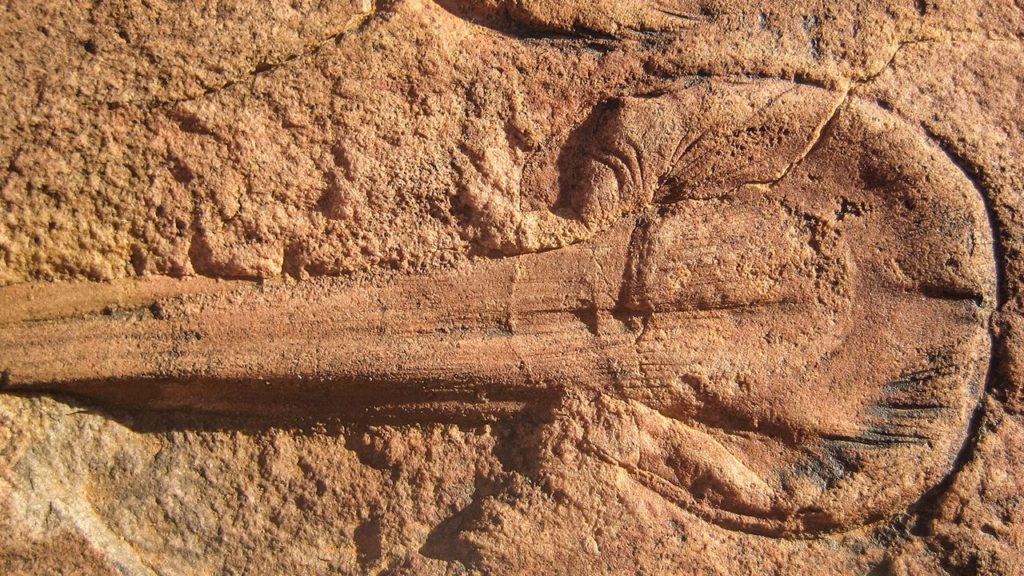@WFS,World Fossil Society,Riffin T Sajeev,Russel T sajeev
The fossils are among the strangest ever found: a corkscrew-shaped tube, an eight-armed spiral, and a mysterious ropelike creature that might have engaged in the oldest known sexual reproduction among animals. They are Earth’s oldest complex organisms, dating back to 571 million years ago, and found on every continent except Antarctica. Their bizarre forms defy classification; some have been described alternately as jellyfish or worms, algae or fungi. But scientists have for years been chasing an even bigger mystery about the so-called Ediacara biota: How could these mostly soft-bodied animals be preserved in rock? Now, one team of scientists has an answer. Their research suggests that in the ancient oceans, silica—the primary compound in quartz—precipitated out of the seawater, then covered and entombed the organisms before they decayed.
“[This paper] will change our way of thinking about Ediacara-type preservation,” says James Schiffbauer, a paleontologist at the University of Missouri in Columbia, who was not involved in the new study. He adds that the process might not be as straightforward as scientists thought.
@WFS,World Fossil Society,Riffin T Sajeev,Russel T sajeev
Most fossils exist thanks to how they were buried plus the makeup of their original tissues. Bones and shells from hard-bodied creatures like dinosaurs and oysters preserve more easily than soft tissues, which decay rapidly after death. That means that most of the fossil record is biased in favor of creatures with hard components. “One of the big questions that we have in really all of paleontology … is how accurately can we read the fossil record as the history of life?” Schiffbauer says.
Before the appearance of the Ediacara biota, named for the Ediacara Hills in South Australia where scientists first found these fossils, all known life on Earth was microscopic. That’s because scientists hadn’t found any evidence of complex life until the “geologically abrupt” entrance of the Ediacaran fossils, says Yale University paleontologist Lidya Tarhan, lead author on the new study. But is this sudden explosion of the fossil record just a preservation bias or is it a sign of a massive environmental trigger for the biota’s emergence? Finding out how the group became fossils “is one of the most important steps in resolving what these organisms are and where they fall in our sense of the evolution of complex life,” she says.
@WFS,World Fossil Society,Riffin T Sajeev,Russel T sajeev
So Tarhan and her team set out to find the answer. They knew the animals lived in shallow waters on the sea floor, and that sand stirred by storms would sometimes cover the organisms. The leading theory for their preservation was that these sand grains molded around dead bodies, and the mold continued to exist long after the bodies decayed. For that to happen, “you have to cement those grains, and you have to do it early,” Tarhan says. Previous work hadn’t addressed how that cementing could have happened. But Tarhan’s team had a theory: Researchers knew the Ediacaran oceans contained far more dissolved silica than modern ones, in part because creatures that soak up silica, like sponges, were rare. So silica was the perfect candidate for a prehistoric glue.
To test their hypothesis, the team took fossils from the South Australian outback and sawed them into slivers of rock so thin that light, passing through them under a microscope, illuminated the ancient grains. “The grains are pretty much floating in what looks like a sea of cement, and they’re not very compacted,” Tarhan says. Her team confirmed that the “sea” was indeed silica. And because the grains weren’t compacted, they must have been loose as the silica cement formed around them. Finally, the team concluded that the silica-based cements were not chemically identical to the silica found in the quartz sand grains, leaving them with only one source for the cement: seawater.
@WFS,World Fossil Society,Riffin T Sajeev,Russel T sajeev
Because this style of siliceous fossilization extends long before and after the Ediacaran, the biota’s appearance—and disappearance—was not just an accident of the fossil record, Tarhan says. Instead, they must represent the group’s actual evolutionary beginning as well its ultimate extinction. “It makes a lot of sense,” says Shuhai Xiao, a geobiologist at Virginia Polytechnic Institute and State University in Blacksburg, who was also not involved in the study. “The next step is to take this model somewhere else, and to test it to see if it works” at other Ediacaran sites around the world.
Courtesy: Article By Lucas Joel in Sciencemag.org
@WFS,World Fossil Society,Riffin T Sajeev,Russel T sajeev



 October 20th, 2016
October 20th, 2016  Riffin
Riffin 
 Posted in
Posted in  Tags:
Tags: 